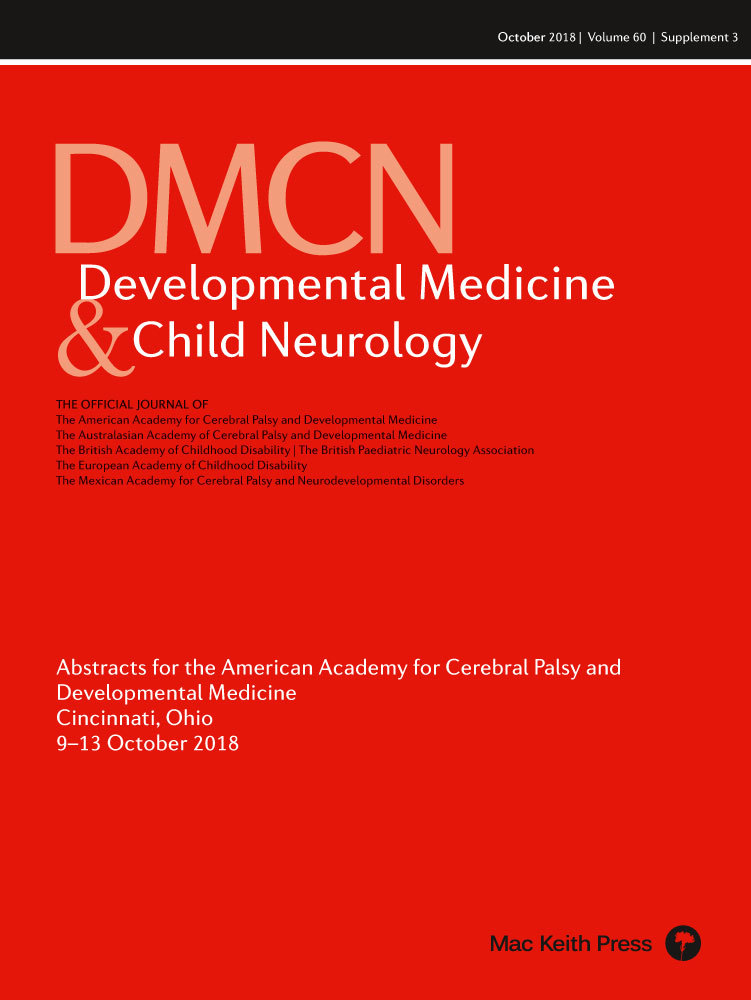Children with medical technology dependency living at home: perceptions of care coordination and family impact
H1
S Sobotka1, E Lynch2, M Quinn1, M Msall1, M Peek1
1University of Chicago, Chicago, IL, USA; 2 The University of Illinois at Chicago, Chicago, IL, USA
Background and Objective(s): Children with medical technology dependency (MTD) who require both a medical device to compensate for the loss of a vital body function and substantial nursing care, are increasingly living in the community. As this population expands and ages, it is essential to have a deeper understanding of what supports are required for community living. In the state of Illinois, the Division of Specialized Care for Children (DSCC) Home Care Program provides care coordination for children with MTD. The purpose of this study is to understand the challenge of families transitioning from hospital-to-home, and their care coordination needs through the lens of state care coordinators.
Study Design: Semi-structured interviews with DSCC care coordinators.
Study Participants & Setting: 15 DSCC care coordinators who had worked with the Home Care Program for at least 1 year.
Materials/Methods: Semi-structured individual interviews were conducted in English and transcribed. Interview topics included: hospital-to-home transition, the parent experience caring for a child with MTD, factors influencing child health and development, challenges and benefits of home nursing, readmissions, and respite care. All interviews were coded independently using a modified template approach in which the interview guide served as an initial code book, modified as additional themes emerged. Coders resolved differences to ensure inter-coder reliability.
Results: Fifteen interviews were completed and transcribed. Themes for family experiences included feeling overwhelmed during hospital-to-home transition, (“Families are so emotionally overwhelmed, they just can't cope at the moment to fully understand what everybody's saying,”) and experiencing the chronic stress of unrelenting caregiving, (“Constant. Exhausting. Stressful. Just imagine never really having any peace of mind. There's no light at the end of the tunnel for them.”) Challenges with home nursing were often discussed at length, particularly for the impact on timeline for a child's initial hospital discharge, parent employment, and overall family functioning. One care coordinator explained, “The challenging part is finding nursing. We don't have enough nurses. We either have the family waiting in transition, or a child is already home and the parents are taking care of them. They need the help. They need to sleep. They need to work.” Another respondent described, “They lose jobs. I have a single parent who's lost two, three jobs a year. I'll call every month, ‘You still working?’ ‘Nope. They fired me. He was in the hospital.’” Themes surrounding readmission revealed that most families try all possible alternatives to avoid hospitalization and preventable readmissions were rare, “If anything the families try to keep them home longer than a normal family would. They're not running to the hospital.” Another reported, “My families don't go to the emergency room right away. One of my moms said, ‘We know her symptoms; we just try to work with it to keep her from going.’”
Conclusions/Significance: Major gaps exist in access to critical home-based services, particularly home care nursing, to support children with MTD living in the community. In order to best support children with MTD and their families and prioritize services following hospital discharge, further research is needed to understand the parent perspective on hospital-to-home transition and ongoing community care. This preliminary qualitative study suggests the major factor limiting care optimization for children with MTD is relief for the parents through reliable and quality home nursing.




